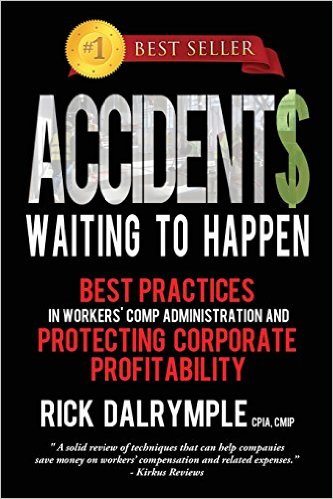Legally Speaking
Be Prepared to Handle EEOC Investigations




When Case New Holland Inc. and its subsidiary, CNH America LLC, became the subjects of an investigation by the U.S. Equal Employment Opportunity Commission (EEOC) for alleged age discrimination in Employment Act violations, they never expected the EEOC to take employee information provided as part of the investigation and contact every employee of their company, soliciting potential class members. But that is precisely what the EEOC did.
In response to an information request by the EEOC, CNH voluntarily provided the agency with materials and documents, amassing more than 600 megabytes of digital information and including more than 1,300 employee e-mail addresses. Armed with hundreds of potential complainants and witnesses, the EEOC blasted out e-mails to CNH’s employees, seeking assistance from them in the “official investigation” of CNH’s alleged discriminatory conduct, all without first notifying CNH. The e-mails even reached managers and supervisors, and also included a link to an online questionnaire drafted by EEOC investigators.
This conduct is representative of the increasingly aggressive posture the EEOC is taking toward enforcement actions against employers. Employers should be aware of these troubling trends in EEOC behavior and be prepared to properly respond to an EEOC complaint. The goal should be to demonstrate compliance with anti-discrimination laws, while at the same time minimizing over-reaching and fishing expeditions on the part of the agency.
The EEOC is the federal agency responsible for enforcing federal laws that make it illegal to discriminate against a job applicant or employee because of that person’s race, color, religion, sex, national origin, age, disability or genetic information. Most employers are covered by EEOC-enforced laws. Employees must file a complaint with the EEOC before they can pursue those claims in court. The EEOC is tasked with investigating the complaints filed with it, and has the power to bring lawsuits on behalf of complainants against employers. The EEOC is also tasked with attempting to conciliate discrimination complaints. In recent years, EEOC investigations, especially in cases deemed to include “systemic discrimination,” have been anything but conciliatory.
Recent Trends in EEOC Complaints
EEOC charges have steadily climbed over the past 10 years. Although there were slightly fewer charges in 2012 than there were in 2011, the total number of charges filed per year has increased by more than 12.2 percent. (See Figure 1.)
At the same time that the number of EEOC charges has significantly increased, the EEOC itself has become much more aggressive in investigating and litigating discrimination charges than it has been in the past. In December 2012, the EEOC released its Strategic Enforcement Plan (SEP). The SEP highlighted the EEOC’s primary objective to combat “systemic discrimination.” However, in several high-profile cases, the EEOC has been heavily criticized by the courts for its investigative conduct.
In August 2013, a federal district judge ordered the EEOC to pay $4.7 million in costs and attorneys’ fees after the EEOC attempted to pursue a systemic (class) sexual harassment case on behalf of around 270 people. There, the EEOC used sweeping but unfounded allegations as a tactic to try to force the company to settle. When that failed to work, they brought suit on behalf of an undisclosed class of individuals. Eventually they named around 270 people, but the number continually dropped. By the time the suit was finished, all the claims but one were either dismissed or dropped. The company settled the original complainant’s claim. The court found that the EEOC had failed to adequately investigate the complaints prior to filing suit, and that it had not attempted to engage in the conciliation process for the majority of the individuals. Accordingly, the court held that the EEOC’s case was frivolous and without foundation, and it assessed costs and attorneys’ fees.
In another recent case, a federal district judge tossed all but a few claims in a systemic pregnancy bias suit brought by the EEOC. There, the judge had strong words for the EEOC, stating that the agency’s conduct “blatantly contravene[d] Title VII’s emphasis on resolving disputes without resorting to litigation” and that the EEOC had spurned any efforts to conciliate individual claims beyond those of the original charging parties.
Tips for Responding to EEOC Complaints
These cases demonstrate the recent approach in EEOC activity and investigatory conduct. When an employer finds itself served with an EEOC complaint, it needs to be ready to respond appropriately. Following are some tips to assist employers in being prepared to properly respond to an EEOC complaint.
- Make sure the proper personnel know that any legal documents received deserve immediate attention. Too often employers receive legal documents from federal agencies, but the documents get lost in the shuffle. Let the appropriate personnel know to be on the lookout. Legal documents often have a seal of a government agency on the envelope or some indication that the document is time sensitive. Many will be delivered certified mail, return receipt requested.
- Immediately contact Human Resources and counsel. When an EEOC complaint is served on an employer, the employer should immediately contact HR and counsel. Employers have certain duties (including preserving records) that they must take when served with a charge. HR and counsel should be immediately involved to ensure compliance with federal law.
- Immediately instruct any witnesses and managers/supervisors involved not to destroy any documents related to the claim.
- Review carefully the information that the EEOC is requesting and consult with counsel. Requests by the EEOC are not mandates or court orders that must be complied with by employers upon receipt. Not all requests for information are proper, and some should be objected to in order to prevent fishing expeditions or a single claim of discrimination morphing into a “systemic” case. Remember that the EEOC must produce an administrative subpoena to obtain the desired records if an employer denies the EEOC’s request for information. When the EEOC does this, the employer has a right to contest the appropriateness of that subpoena in court.
- Have appropriate documentation on the front end. The EEOC is looking for evidence that the employer has attempted to comply with anti-discrimination laws. The agency typically looks for the following during an investigation: evidence of an EEO and harassment policy; evidence of training on these policies; documentation supporting any employment decision (i.e., counseling documents and incident reports); documentation on any policies violated by the complaining employee; and performance evaluations. Ensure that these documents are created and properly maintained on the front end. This helps successfully demonstrate the employer’s compliance with anti-discrimination laws to the EEOC.
- Remember that states have investigatory agencies as well. Almost all states have equivalent agencies to the EEOC that perform the same investigatory and enforcement duties. Often state agencies will defer to the EEOC’s investigation, but employers should be on the lookout for state documents as well. Employers should also be aware of their state agency’s trend in investigations. Some states’ agencies are more conciliatory, while others have become increasingly aggressive.
Federal agencies are continuing to push the envelope against employers, adopting a “sue first, ask questions later” approach. The EEOC is a prime example of such conduct. With almost 100,000 complaints filed with the agency each year, chances are that one may arrive at your door. Knowing what to look for and how to respond can put employers in the best possible position to demonstrate their compliance with anti-discrimination laws, and protect themselves against an inappropriate expansion of an investigation by the agency.
Looking for a reprint of this article?
From high-res PDFs to custom plaques, order your copy today!









